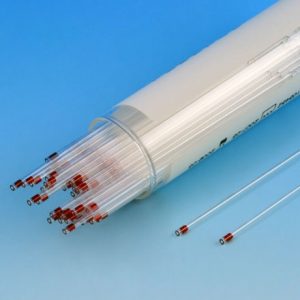Blood Collection and Processing
The Preclinical Research Unit (PRU) technicians are proficient at a variety of blood collection methods in laboratory rodents. It is well established that most errors (up to 70%) occur in the pre-analytical phase of laboratory testing. The Animal Clinical Laboratory and Preclinical Research Unit are in the process of conducting a quality assessment study to determine whether utilizing the technical expertise of a core offers an advantage regarding the consistency of data generated.
General Guidelines
While there are several acceptable methods of rodent blood collection, each method has advantages and disadvantages. Chronic blood withdrawal requires strict limits on obtained volumes and careful consideration for study time-points. The PRU can provide whole blood, plasma or serum.
Acute Blood Withdrawal
The maximum allowable amount of blood withdrawn for an acute withdrawal is 1% of the lean body weight.
Chronic Blood Withdrawal
The maximum allowable amount of blood withdrawn for chronic withdrawals is 1.5% of lean body weight within a 14-day period.
More information regarding IACUC guidelines can be found here
Methods
Submandibular
Submandibular bleeds are an easy way to obtain blood quickly from an awake mouse. A lancet is used to puncture the superficial temporal vein. A volume over 100ul is easily obtained.

Tail Nick
Tail Nick bleeds are best for small volume serial bleeds. A large gauge needle or lancet is used to puncture the vein and blood is collected in micro capillary tubes.
Retro-Orbital
Retro-orbital or orbital sinus/plexus bleeds require scientific justification and approval through the IACUC. There are very strict requirements for timing and number of bleeds that can be performed. PRU technicians are skilled to perform retro-orbital bleeds in both anesthetized and un-anesthetized (exception required) laboratory mice.

Cardiac Puncture
Cardiac Puncture is a terminal blood withdrawal procedure performed under a surgical plane of anesthesia. PRU technicians can use gas or injectable anesthesia for cardiac punctures.